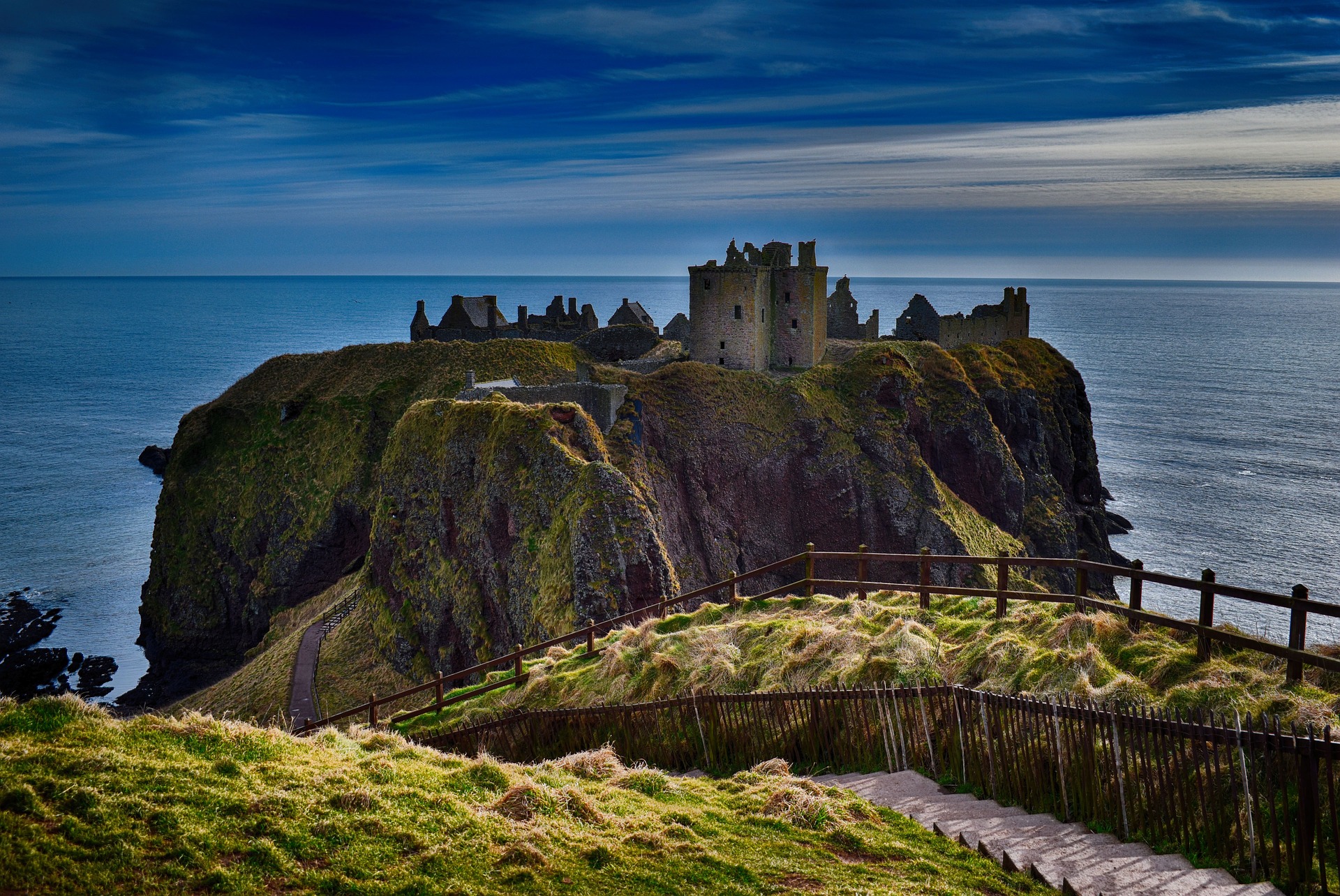Key Highlights:
Location: The castle is situated on a rocky headland, almost entirely surrounded by steep cliffs that drop into the sea. A narrow strip of land connects the castle to the mainland, providing a naturally defensible position.
Historical Significance:
Early History: There are records of a fort on the site as early as the 3rd century, though most of the surviving ruins date from the 15th and 16th centuries.
Scottish Wars of Independence: Dunnottar played a key role during the wars of Scottish independence. Sir William Wallace is said to have captured an English garrison here in 1297.
Covenanters and the Scottish Crown Jewels: One of the most famous episodes in Dunnottar’s history occurred during the 17th century when the Honours of Scotland (Scotland’s crown jewels) were hidden in the castle to protect them from Oliver Cromwell’s forces. The jewels were smuggled out and preserved, and the castle withstood an eight-month siege by Cromwell’s army in 1651.
Architecture: The remains of Dunnottar Castle include parts of the keep, gatehouse, and several outbuildings. The castle covers a large area, with buildings arranged around a central courtyard. The structures are mainly medieval, with later modifications during the 17th century.
Decline: After its strategic importance diminished, Dunnottar Castle fell into ruin in the 18th century. Today, it is a preserved ruin and a popular tourist destination, offering visitors a chance to explore the remains and enjoy stunning coastal views.
Cultural Influence: Due to its dramatic appearance and history, Dunnottar has inspired numerous works of art, literature, and film. It was the location for several scenes in the 1990 movie Hamlet, starring Mel Gibson.
Visiting the castle:
Dunnottar Castle is open to the public and can be accessed via a steep path leading from a parking area near Stonehaven. Visitors can tour the ruins and learn about the castle’s storied past through displays and guides.
Its combination of historical significance, picturesque location, and romantic ruin has made Dunnottar a favourite among photographers, history enthusiasts, and tourists alike.


